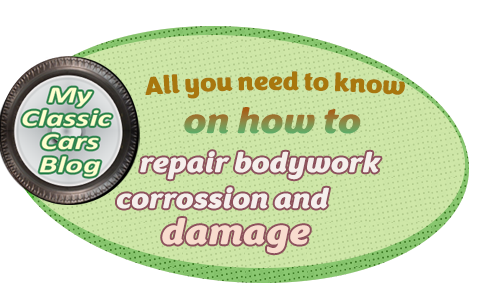
 Possibly the greatest fear that even the most experienced restorer will confess to is when the restoration car arrives at the workshop, and the damage caused by corrosion is much more widespread than first considered,
Possibly the greatest fear that even the most experienced restorer will confess to is when the restoration car arrives at the workshop, and the damage caused by corrosion is much more widespread than first considered,
There is not a lot to be done about rust, which is a natural process technically known as metal oxidation and is caused when the iron content in body metal forms a chemical reaction to oxygen in the air in a wet or even damp climate or environment and produces the iron oxide, Fe2O3, better known as rust.
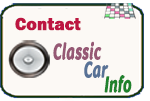 Today's cars are much less liable to rust and/or corrosion, thanks to the widespread use of galvanised steel combined with advances in anti-rust paint coatings.
Today's cars are much less liable to rust and/or corrosion, thanks to the widespread use of galvanised steel combined with advances in anti-rust paint coatings.
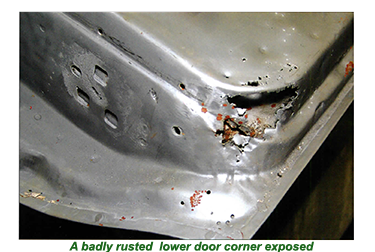 UK and European car manufacturers of the Fifties and Sixties did not have these materials at their disposal, meaning that most vehicles produced during these years did suffer a lot from rust which was accelerated by the extensive spreading of salt on winter roads, especially during the mid-Sixties and Seventies.
UK and European car manufacturers of the Fifties and Sixties did not have these materials at their disposal, meaning that most vehicles produced during these years did suffer a lot from rust which was accelerated by the extensive spreading of salt on winter roads, especially during the mid-Sixties and Seventies.
When the day dawns when the restoration vehicle returns to the workshop from a short visit to the sandblasters or acid dipper and the full extent of the rust or corrosion is there for full inspection, it is essential to have a programme ready to tackle the problem- no matter how serious and potentially expensive it might be.
The tricky spots where rust will have begun to form in a car that has been around for several decades are the doors and around the front windshield, where the manufacturer has drilled an outlet so that build-ups of water can rapidly escape.
Over the years, these outlets will have clogged up, allowing water to accumulate, bringing with it rust.
![]()
Any dents or cracks in the paintwork or holes drilled to accommodate radio antennas or even roof racks will also allow water to seep into the body and, with it, rust.
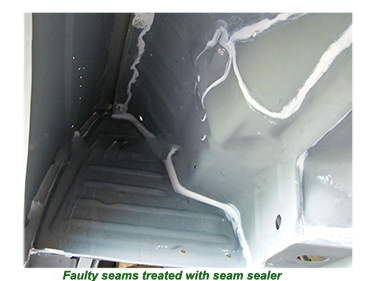 What must be remembered is that are only four recognised categories of rust damage, with none of them meaning a certain death sentence for the restoration vehicle.
What must be remembered is that are only four recognised categories of rust damage, with none of them meaning a certain death sentence for the restoration vehicle.
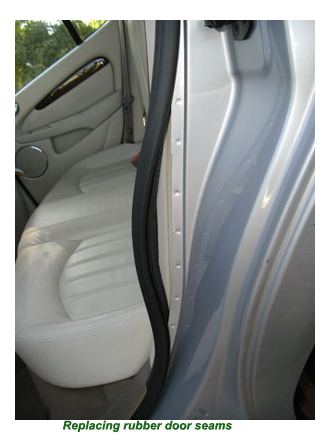 The chances are that rust damage can be classed as minimal. In most cases, rust can be recognised even before the original paint is removed.
The chances are that rust damage can be classed as minimal. In most cases, rust can be recognised even before the original paint is removed.
Signs of superficial rust damage are paint bubbling or cracks beginning to appear on the paint surface,
All required is to treat these lightly damaged areas by removing any dirt, grease, and oil before the major preparation and paint stages begin.
The next stage, which will give some cause for concern, is the discovery of surface rust.
Surface rust forms on the uppermost paint levels, manifesting in slight black, brown or even white discolouration.
This situatuation will rapidly deteriorate to a stage where cracks will begin to appear. If caught at this stage, surface rust will be easily removable without the need for outsourcing.
No specialist materials are required, just some basic materials and tools and lots of elbow grease! Care must be taken to assess the spread of the rust without taking too optimistic an approach, leaving a large margin for error.
If treated well and early enough, then this localised problem will disappear.
The next stage of corrosion and rust on a car body, if discovered, is where the extreme worries should start to begin.
This condition, known as scaling corrosion, is where the metal itself has already begun to degrade under the paint.
![]()
The presence of scaling displays itself by the gradual appearance of bubbles on the paintwork of the affected areas, giving the paintwork an increasingly rough texture that will soon begin to pit.
If scaling has remained untreated, the corrosion will spread rapidly and show itself by leaving small pinholes on the vehicle's panels and eventually its metal frames.
These holes will grow gradually bigger until they have eaten away a considerable percentage of the surface panels and even the much tougher car frame.
This could be classed as the worst-case scenario, which thankfully does not occur very often.
There are brave-hearted restorers with deeper pockets than most that will take on a restoration project irrespective of the state of rust on the car panels.
They are prepared to invest a lot of time and money to bring these panels back from the dead.
However restorers will be faced with a major dilemma if it is discovered that the main frame itself has become so badly rusted that it will need to be considered unsalvageable.
At this stage, the DVLC will need to be informed; otherwise, the vehicle will be illegal if driven on the roads. When informed, the Licensing Authorities will declare the vehicle a write-off, meaning it will lose its original registration and most of its authenticity (and a high percentage of its resale value after re-registration after the frame has been replaced).
The dilemma of cost and value will begin to play an increasing part in a restorer's mindset when faced with extensive corrosion or rust damage.
 If the damage is restricted to surface and scale rust, then it's almost a "no-brainer".
If the damage is restricted to surface and scale rust, then it's almost a "no-brainer".
When the rust problems discovered are seen to be more extensive, then the restorer may have to make the painful decision to cut their losses and cancel the restoration due to a lack of budget or desire the rescue the vehicle.
bo23


